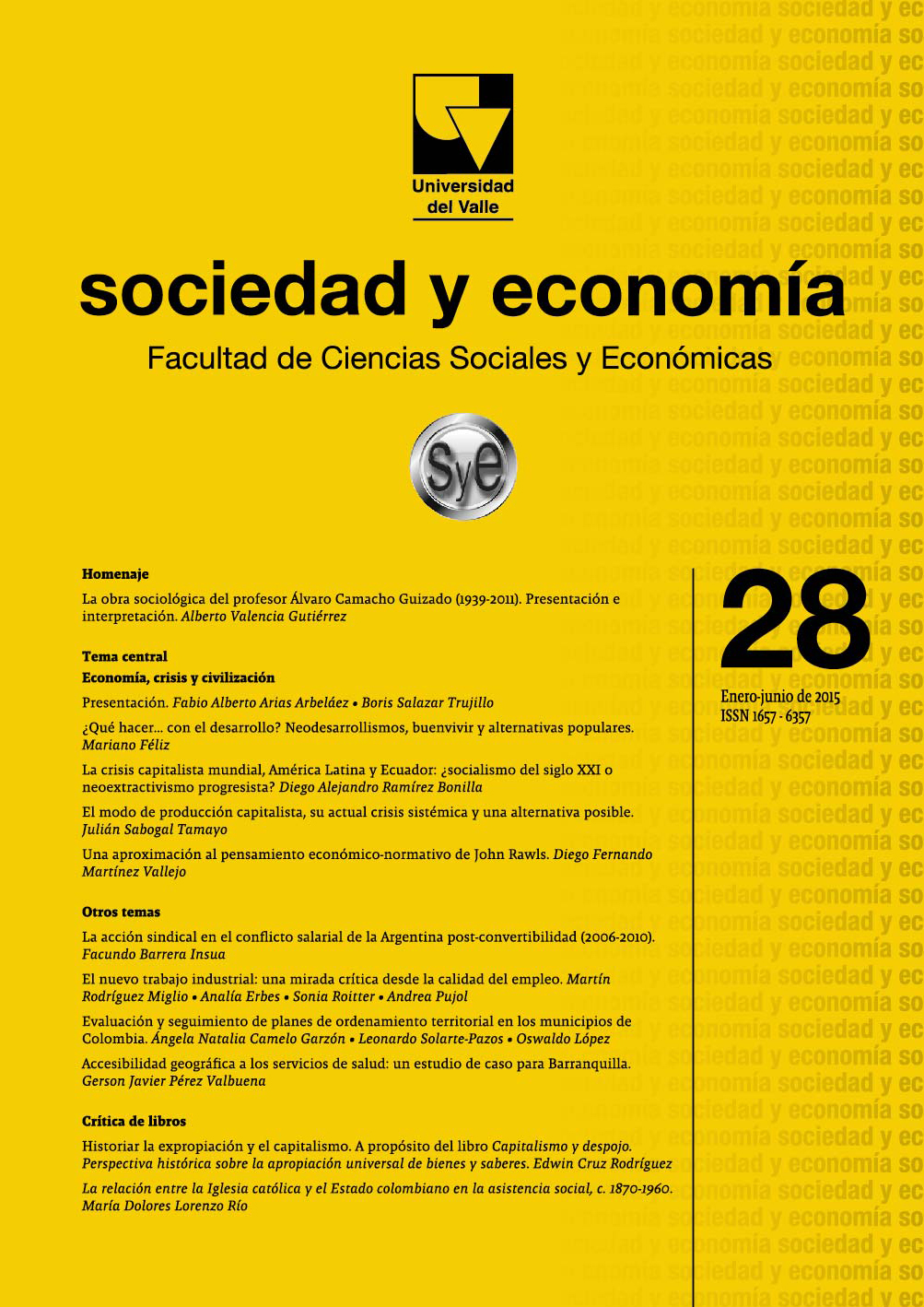Geographical Accessibility to Health Services: A Case Study for Barranquilla
Keywords:
Health Economics, Spatial Accessibility, Generalized Threshold ModelsMain Article Content
In this article, the expansion of the public hospital network in Barranquilla in 2008 is used to assess improvements in geographical accessibility and equality in providing health care services. Particularly, seriousness measures are used to calculate accessibility, considering mobility restrictions, as well as information regarding demand for health care services. Additionally, data on satisfaction indicators is used to assess levels of equa- lity achieved with the expansion of the expansion of the public health care network. The results show significant improvements in accessibility between 2008 and 2013, especially within the poorest locations. In terms of equality, it was found that satisfaction with health services still depends on social-economic factors.
Downloads
Revista sociedad y economía editada por la Facultad de Ciencias Sociales y Económicas de la Universidad del Valle se encuentra bajo una Licencia Internacional Creative Commons Atribución - No comercial 4.0
Basada en una obra en http://sociedadyeconomia.univalle.edu.co

